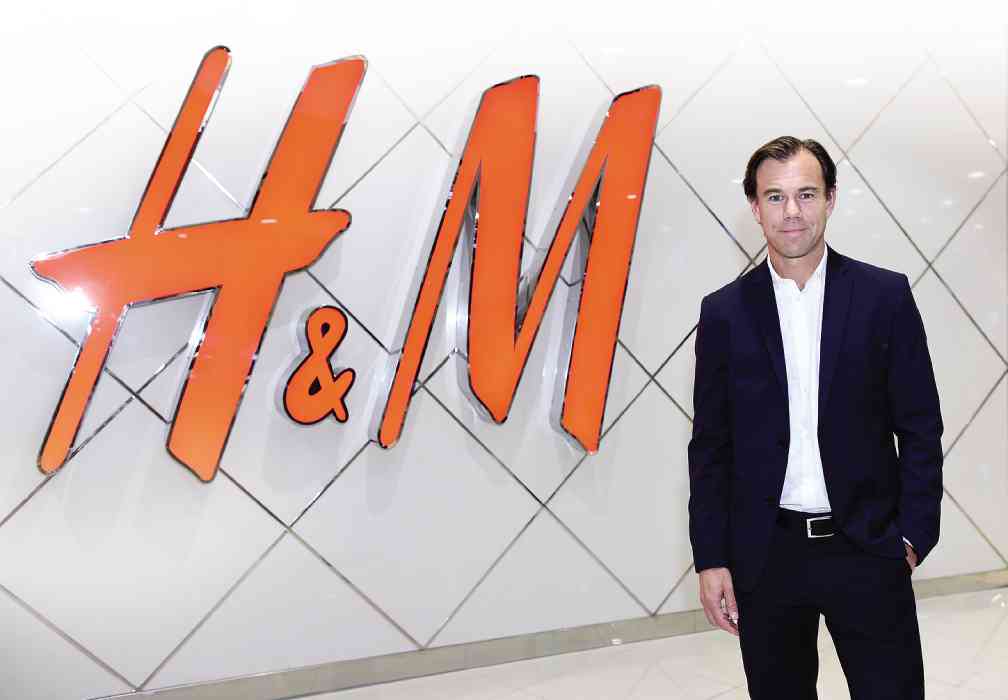In the prosperous northern European country of Sweden, equality and democracy are not amorphous principles.
These principles find concrete manifestation in the way its government and organizations are run, in that corporations dispense with too much hierarchy and the lines between supervisors and subordinates are blurred when discussing ideas.
In Sweden, ideas are shot down or championed on their merit, and it does not matter too much where they came from, whether from management or the rank and file.
This way, potentially trailblazing and groundbreaking concepts are brought to the fore, not nipped in the bud.
According to Karl-Johan Persson, CEO of publicly listed H&M Hennes & Mauritz AB, which owns and operates H&M retail stores, these democratic principles find expression in the entire line of apparel, shoes and accessories that H&M offers the global market.
Indeed, H&M’s business concept is “fashion and quality at the best price,” which means that the wide range of products in its store do not cater only to high net worth individuals, but rather to a bigger demographic that wants the latest in fashion but at a price point that is not too painful on the wallet.
It is democracy and equality at play in the fickle world of fashion.
“We want to be accessible to a wide market and open to all,” said the 39-year-old Persson, who was in the country last week for the opening of the first H&M store at the Mega Fashion Hall in SM Megamall.
That H&M, the world’s second largest clothing retailer, can afford to keep its prices within reach of a wide section of the market can be attributed to the Swedish style of running an organization, Persson said.
Teamwork is favored, rather than strict adherence to the table of organization.
“The Swedishness in our offering is more in the internal, about teamwork, and not about hierarchy. At H&M, the best idea should win, it is not the person with a certain title who gets to decide. It is collaboration at all levels and also about having fun,” said Persson, grandson of Erling Persson, who opened the first shop called Hennes (Swedish for “for her” or “hers) in 1947 and then bought hunting apparel retailer Mauritz Widforss in 1968, adding the men’s line and leading to the name change to Hennes & Mauritz (H&M).
Also an integral part of the Swedish character that is reflected by the company is its dedication to being a responsible retail firm, with sustainability being a serious concern across the organization.
“We want to be a responsible company, that’s why we have this whole focus on the environment and the social environment. These are not yet very hot concepts in the Philippines, but around the world, I believe people want to buy from a company that takes wider responsibility,” said Persson.
Persson, for example, was in Bangladesh before coming to the Philippines for a discussion with stakeholders in that country’s thriving garments sector.
Bangladesh was recently in the spotlight because of safety concerns of its garments factories, which supply the needs of some of the world’s biggest retail names.
H&M was the first brand to sign the Accord for Building and Fire Safety in Bangladesh.
This move is part of H&M’s campaign—called Conscious—to make “fashion sustainable, and sustainability fashionable.”
Programs include global garment collecting scheme, through which customers can return their used garments to an H&M store in exchange for a voucher.
H&M meanwhile, takes responsibility for the proper recycling of the used products. At the same time, H&M is reducing, reusing and recycling other materials such as hangers, packaging and shopping bags.
This bias toward responsibility and sustainability, Persson said, gives one more reason for customers to patronize H&M, although the biggest driver remains its fashionable products and affordable prices.
Persson said H&M was very much aware of competition in the market that continues to tighten, making business conditions challenging for all players, including H&M.
H&M is the latest entrant to the growing Philippine market, which is already home to other global brands.
Persson is confident, however, that through its offering of a fresh line of best quality clothes at the best prices, a space will open up, and thus meet H&M’s expectations that the Philippines will be a strong market that will add significantly to its bottom line.
“We want to come in with a greater offering than what exists. We have huge respect for competition, but we believe we have a strong place in the market,” said Persson, who headed the business development and expansion group of H&M before taking over the reins of the company as CEO in 2009.
H&M has long been looking at the Philippines as a potential market, he said, given its huge and young population.
It was just waiting for the right time to enter, given its philosophy of growing in a controlled way, with quality, sustainability and high profitability.
“The Philippines is a super interesting market with its 100 million people and growing economy. Fashion interest here is also high. We have been looking at this country for quite some time, but we need to enter with quality given that we go to several countries at once. It is just that it takes more effort to go to a new country than it is to expand in others,” said Persson.
With the opening of new retail spaces and the rapid growth of the Philippine economy that has put more money into the pockets of consumers, H&M feels that it has finally arrived in the right place at the right time.


